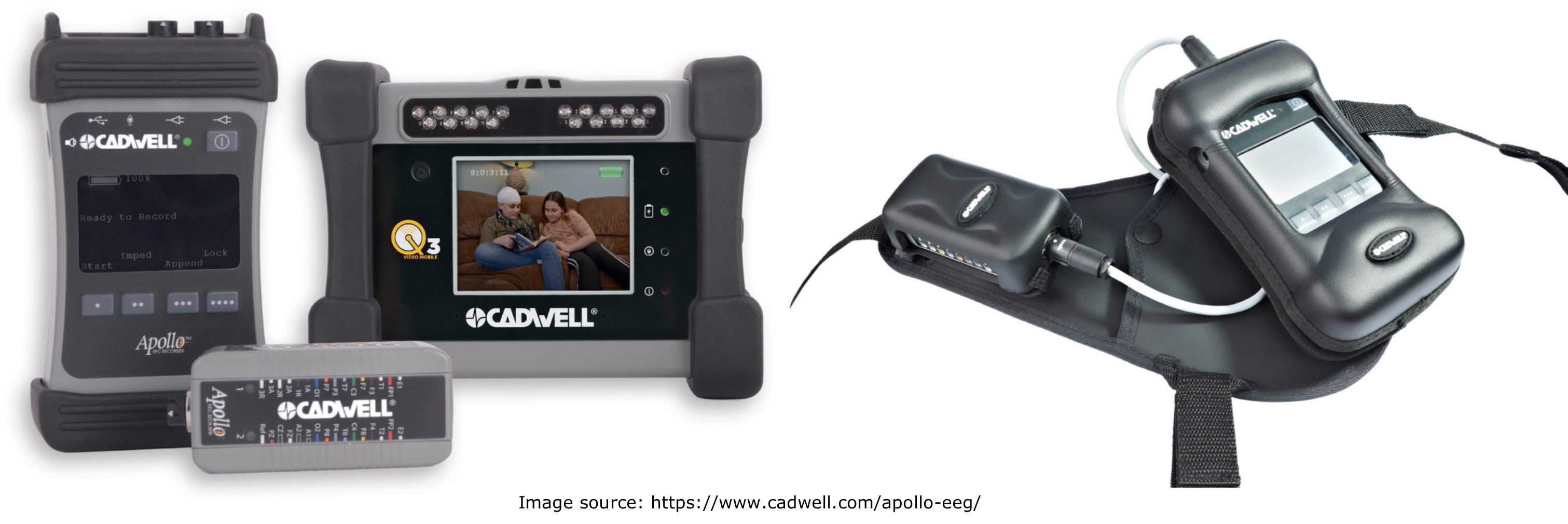
In the Non-Invasive Testing Departments at Brigham and Women’s Faulkner Hospital, one of the many tests available to providers and their patients is electroencephalogram (EEG). During an EEG, a technologist places electrodes on their patient’s scalp, which detect electrical activity in the brain in order to diagnose brain conditions such as epilepsy and other seizure disorders. Now, thanks to new state-of-the-art video-enabled technology, the technologists and referring providers are able to obtain a clearer understanding of each patient’s symptoms as they relate to the EEG waveforms.
“We recently purchased two Cadwell Arc Apollo EEG systems for ambulatory EEG testing,” says Ben Pariser, Director of Non-Invasive Testing. “Patients undergoing an ambulatory EEG study arrive at BWFH for an outpatient visit in the EEG Lab. During the visit, the electrodes are placed and the patient receives instructions and education about the equipment. They then return home for 24 to 72 hours.”
At-home EEG testing has been used to track electrical activity in the brain for some time, but what’s unique about this new equipment is its video monitoring capabilities and linked microphone, which allows the patient to explain their experiences and symptoms in their own words. “This new technology will helps us identify waveforms, known as ‘artifact,’ that can mimic those produced by seizures or other neurological abnormalities, but are actually the result of routine actions such as brushing one’s teeth or chewing through harder foods,” explains Pariser.
The EEG Lab’s Lead Technologist Sandy Powers says the state-of-the-art technology, worn at home, has many benefits. “But most important is patient care and experience,” she says. “With at-home testing, the patient avoids the expense of admission, long wait times and lack of having episodes in a hospital setting,” she says.
For providers, the new technology has benefits as well. Medical Director Milena Pavlova, MD, says, “As a clinician, I have often struggled and tried to imagine the movement a patient has when I see rhythmic appearing signal on an EEG. While some can be seizures, there are many seizure-look-alikes on an EEG, produced by routine movement such as shivering, tooth-brushing and others. This innovative technology allows us to better evaluate patients in their home environment. Additionally, video recordings allow us to assess whether any of the movements we have captured are stereotypic, and what is their duration and character, which further helps the diagnosis.”
Looking for more news from BWFH? Go to News to find articles about health, updates to our programs and services and stories about staff and patients.
Go to News